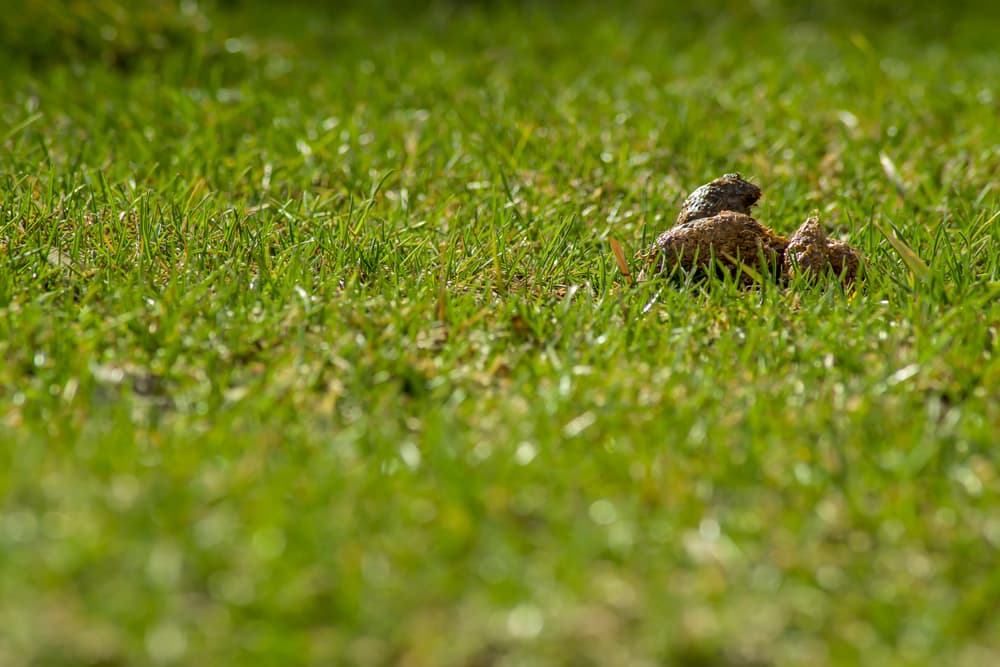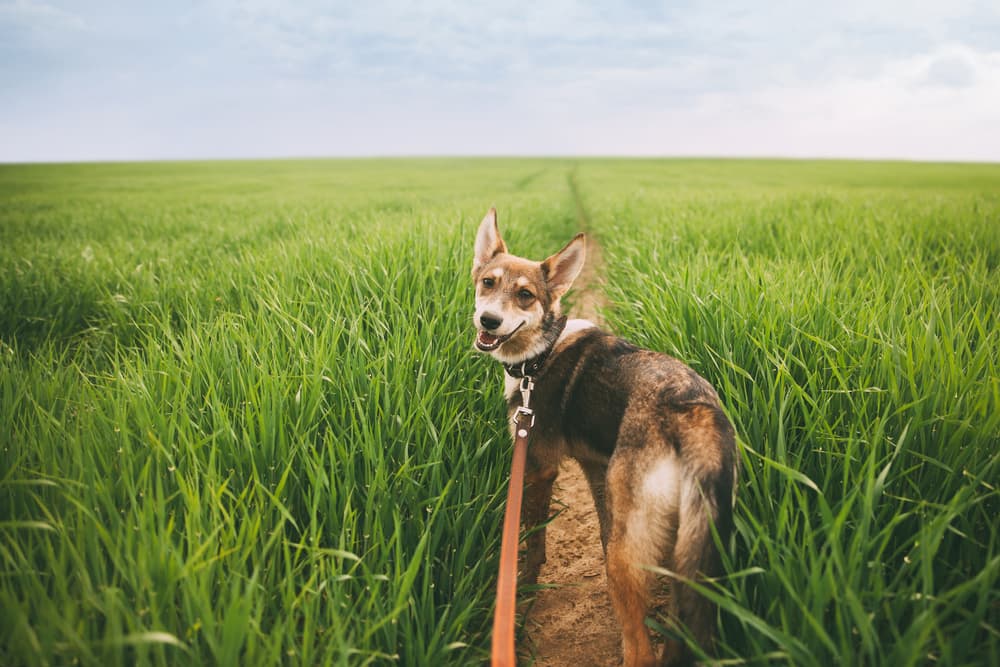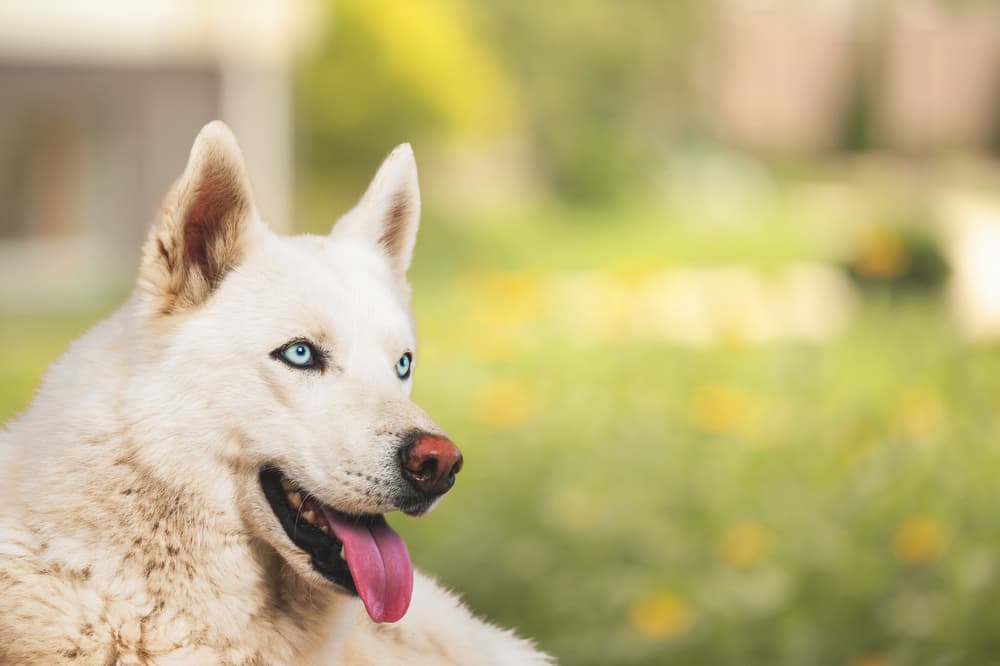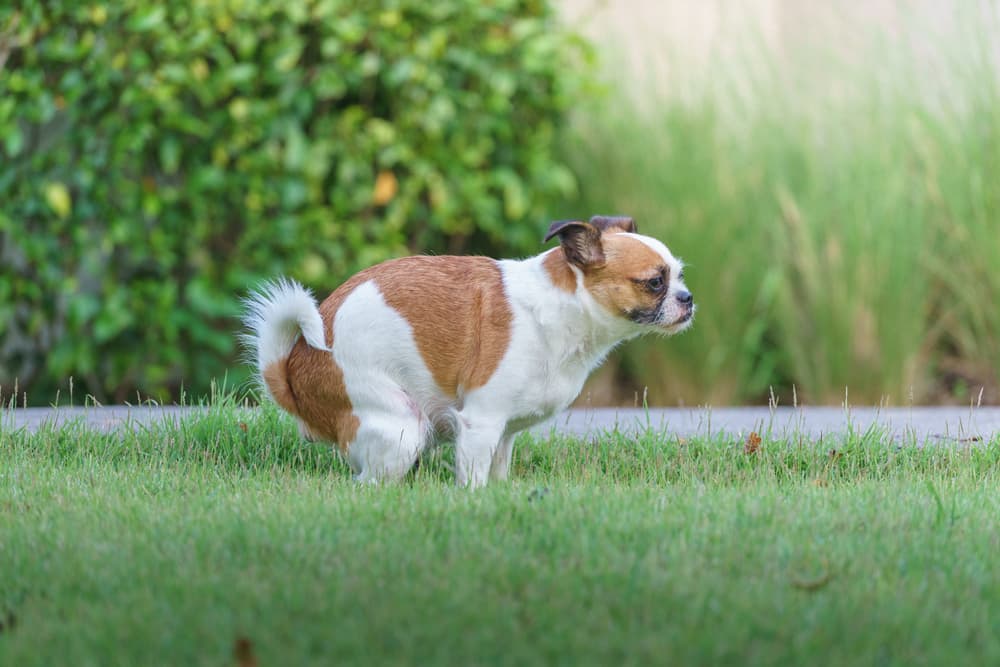What Color Should Dog Poop Be?

First things first—dog poop should be brown. The exact shade depends on what your dog eats. For example, dyes in your dog’s food can stain his feces a variation of that color.
Feces is brown because of the breakdown of a substance called bile, which is an important part of digestion. Bile is made in the liver, stored in the gallbladder, and secreted into the intestines just as food exits the stomach and starts its way through the intestines. Most bile is reabsorbed as the food material is digested, but some gets trapped. It then undergoes changes as the food material is further digested into feces which cause the originally green material to turn yellow and then brown.

Digestion of food into feces is a complex process. In addition to color, the consistency, coating, and contents are all important features of poop to consider when evaluating your pet’s health. Consistency refers to whether it’s firm, formed, soft, or liquid. Coating refers to whether there is mucus, blood, or both on the surface of the feces. The contents of feces should be fairly uniform. For example, finding blades of grass or pieces of a toy is abnormal.
Why is My Dog’s Poop Yellow?

Of all the colors poop can be besides the normal brown, yellow is usually one of the least concerning.
Red or black dog poop is an emergency, while yellow poop is more like a warning sign. Here are some of the more common causes of yellow dog poop.
What your dog eats impacts the color of his feces. Some formulations of dog food have ingredients that make feces more yellow or a lighter shade of brown. Similarly, some types of food processing can alter the hue of feces. Switching between canned or moist food and dry kibble can also make feces look more or less yellow.

An upset stomach—from changing dog food or a dog eating something he doesn’t normally eat—can cause irritation in both the stomach and intestines. One of the ways the body handles this is to push the material out faster. Veterinarians refer to this as decreased transit time, the time it takes from eating a food to passing it as feces.
Decreased transit time leads to softer feces that is yellow. The bile that is normally brown in feces hasn’t reached that stage yet and is still yellow (mustard-yellow to yellow-green). Similarly, this is why loose stool or diarrhea may be more yellow than usual.
If your dog eats something yellow that isn’t food, it will end up in his feces (unless it causes an intestinal blockage, which is a greater cause for concern). For example, dogs cannot digest the yellow fuzz from a tennis ball and will pass it through the feces looking the same color as it went in.

A slimy coating of yellow mucus on dog poop is due to intestinal inflammation. In healthy intestines there is a protective mucus layer between the food material and the intestinal lining. When there is inflammation or damage to the intestines, this mucus layer can be shed onto the food material and eventually the feces.
In this case the yellow color comes from the bile involved in digestion. Intestinal inflammation can result from parasites, bacterial infection, food intolerance, or sharp objects such as sticks, rocks, and bones that your dog ate. If the intestinal damage is more severe, the mucus may have streaks of red blood or look an orange-yellow color.

Yellow specks or dots are most often caused by one of two things: partially digested food like corn, or tapeworm eggs. Usually, these eggs look like grains of white rice but they may also have a yellow color. Yellow or white strings could be intestinal worms. If you see something that you think is abnormal in your dog’s feces, take a picture or bring a stool sample to your veterinarian.
Why Does My Dog Have Yellow Poop?
While there are a handful of reasons as to why your dog’s poop has turned yellow, there is not an immediate concern that would leave you feeling the need to rush to the pet hospital. Think of it this way: consider yellow dog poop as a warning sign. Pet owners should familiarize themselves with the main causes of a change in fecal matter colors because it is a simple, yet effective approach to better understand what is going on inside your furry friend.
Yellow poop can be a little alarming at first, but there is no immediate need for pet owners to fret. Food intolerance is one of the leading causes of yellow dog poop, and owners can hopefully be traced back to when exactly the change happened.
If you recently changed your pet’s food, it can take a little time for your dog to adjust to new food or treats.1 If you noticed that your dog’s poop turned yellow around the same time that you may have changed your dog’s food or tried out some new treats, give it a few days to determine how your dog’s body will adjust before calling in for medical reinforcements. If the yellow dog poop continues on for too long or does not resolve itself, consider changing the food back to avoid further upsetting your dog’s stomach.
Another cause of yellow dog poop can be a result of indigestion. As we know, a change to our dog’s food or diet can lead to an upset stomach, which in turn often results in yellowish dog poop. When this irritation is prevalent, your dog’s body works diligently to try to quickly get rid of the so-called foreign matters or food that it is not used to, and thus often leads to diarrhea that tends to be yellow in color. The reason that the dog poop becomes yellow is because when the body is trying to get rid of these upsetting trigger items, it does not give the body enough time for the bile to properly process.
If you are certain that your dog has not eaten any new treats or food, then it is possible that your dog’s yellow poop is a sign of a bacterial or parasitic infection in your dog’s digestive tract. If an infection is left untreated, it could develop into a greater, and more serious issue.
Aside from a bacterial infection, another one of the possible causes of an infection could be a result of a parasite in your dog’s intestines or digestive tract. If you notice that the yellow dog poop persists with no self remedy, it may be time to schedule a visit with a veterinarian to best diagnose if your pet has an infection.
Yellow Dog Poop: 7 Causes & What Pet Owners Should Do About It
Keeping an eye on your dog’s poop color and consistency can really help you spot changes in his health. One of those changes you may notice is yellow dog poop. As a veterinarian, I’ve seen dog poop in as many colors as the leaves in the fall, some more alarming than others. So, let’s dive into the causes of yellow poop and discuss 5 steps you can take at home to help your dog.